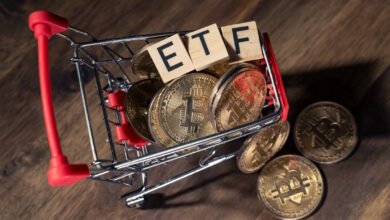
Within the vast and turbulent realm of Cryptocurrency, Ethereum’s dominance as a leading blockchain platform has mainly remained unquestioned for years. Ethereum, renowned for its innovative approach to smart contracts and decentralized applications (dApps), has attracted a thriving community of developers, investors, and businesses.
However, as the landscape of digital currencies evolves, new competitors with unique benefits that challenge the status quo are emerging. XRP Price, the digital asset native to the Ripple network, is one such challenger that is progressively considered a possible alternative to Ethereum’s dominance by 2025. Examining technological advances, market dynamics, legal changes, and broader industry trends, this paper explores the complex reasons why XRP might dethrone Ethereum.
Ethereum’s Scalability Challenges and Competitors
Ethereum transformed the blockchain landscape in 2015 when Vitalik Buterin and other co-founders launched programmable smart contracts, non-fungible tokens (NFTs), and a diverse ecosystem of decentralized applications (dApps). Aiming to increase scalability, security, and energy efficiency, Ethereum’s platform utilizes a blockchain architecture that, until recently, relied on Proof-of-Work (PoW) consensus before transitioning to Proof-of-Stake (PoS) with the launch of Ethereum 2.0.

Ethereum continues to face ongoing issues with scalability and high transaction fees, often referred to as gas fees, despite its robust infrastructure and widespread adoption. During times of network congestion, these fees may surge, therefore limiting usability for daily users and smaller transactions. Although Ethereum’s Layer 2 solutions, such as Arbitrum and Optimism, provide some relief, the ecosystem remains fractured and complex. Moreover, continuous discussions regarding energy use and decentralization help mold public opinion and regulatory focus, thereby defining an uncertain future.
Competitors like XRP, which stress efficiency, speed, and real-world financial integration, find a stage on this backdrop.
XRP’s Role in Cross-Border Payments
Launched by Ripple Labs in 2012, XRP was explicitly designed to facilitate quick and inexpensive cross-border transactions. Using the XRP Ledger’s (XRPL) special consensus mechanism, XRP emphasizes payment interoperability and liquidity provision, unlike Ethereum’s wide, innovative contract ecosystem. Unlike Ethereum’s fluctuating and sometimes costly gas prices, this protocol enables transactions to settle in under four seconds with minimal fees.
Leading worldwide banks and payment providers, including Santander, Standard Chartered, and SBI Holdings, have strategically teamed with Ripple Labs, the startup behind XRP. These partnerships underscore XRP’s increasing institutional adoption, as well as its application in traditional financial markets. Designed as a distributed network of financial institutions, Ripple’s RippleNet technology enables real-time, worldwide settlements, which are essential for updating the global payments infrastructure.
Moreover, Ripple distinguishes itself in a field sometimes defined by regulatory uncertainty through its proactive interaction with governments and authorities. There are significant implications for the ongoing legal proceedings under the U.S. Securities and Exchange Commission (SEC) regarding whether XRP should be classified as a security. A positive result for Ripple could significantly enhance XRP’s reputation and increase its access to mainstream financial markets, particularly in the United States.
CBDCs XRP and Digital Integration
The emergence of Central Bank Digital Currencies (CBDCs) marks a significant turning point in global banking. From China’s digital yuan initiative to the European Central Bank’s investigation of a digital euro, governments and central banks worldwide are aggressively exploring central bank digital currencies (CBDCs) as part of their monetary policy frameworks.
XRP’s technology is particularly well-positioned to facilitate CBDC integration due to its scalability, interoperability, and secure consensus mechanism. Ripple has openly expressed interest in facilitating CBDC adoption by providing infrastructure that links these newly created digital currencies with existing financial systems. Ethereum, on the other hand, has not yet achieved comparable traction or specialized integration with governmental digital currency programs, despite its flexibility.
Networks offering minimal transaction costs, efficient liquidity sourcing, and seamless connectivity will take center stage as central bank digital currencies (CBDCs) proliferate.
XRP’s Expanding Ecosystem and Innovation
XRP has been steadily expanding its ecosystem, while Ethereum’s developer community is among the largest and most active in the cryptocurrency field. The XRP Ledger integrates with technologies like the Flare Network, which adds innovative contract capabilities to XRP holders and offers native token issuance and distributed capabilities.

XRP’s increasing adaptability enables it to expand its use cases from payment settlements into DeFi applications and NFT issuance, fields typically dominated by Ethereum. Ripple also continues to make investments in developer tools, education, and alliances to create an ecosystem that strikes a balance between technological creativity and pragmatic financial uses.
Regulatory Clarity’s Impact on Cryptocurrency
Especially among institutional investors and financial authorities, the broad acceptance of cryptocurrencies depends on regulatory clarity. Although changing regulations surrounding DeFi and digital assets could impact Ethereum’s future, it has largely avoided direct regulatory clashes over its token classification.
Legal battles between Ripple and the SEC are crucial since they will define how U.S. law treats cryptocurrencies. A clear regulatory status will also enable XRP to negotiate worldwide markets with greater confidence, potentially surpassing Ethereum in countries where compliance and risk reduction take center stage.
Final thoughts
XRP stands out in a crowded sector due to its emphasis on rapid, low-cost cross-border payments, growing institutional cooperation, and openness to interacting with emerging central bank digital currency (CBDC) frameworks. Ethereum remains essential due to its innovative contract features and large developer base. Still, XRP’s pragmatic approach to financial interoperability and regulatory interaction could redefine its significance in the digital economy.
Legal developments, technological advancements, and the market traction of Ripple in the years to come should be closely monitored by investors, developers, and industry observers. The possible dethronement of Ethereum by XRP would indicate a significant paradigm shift, underscoring the growing importance of scalability, regulatory clarity, and practical use cases in determining blockchain leadership.








